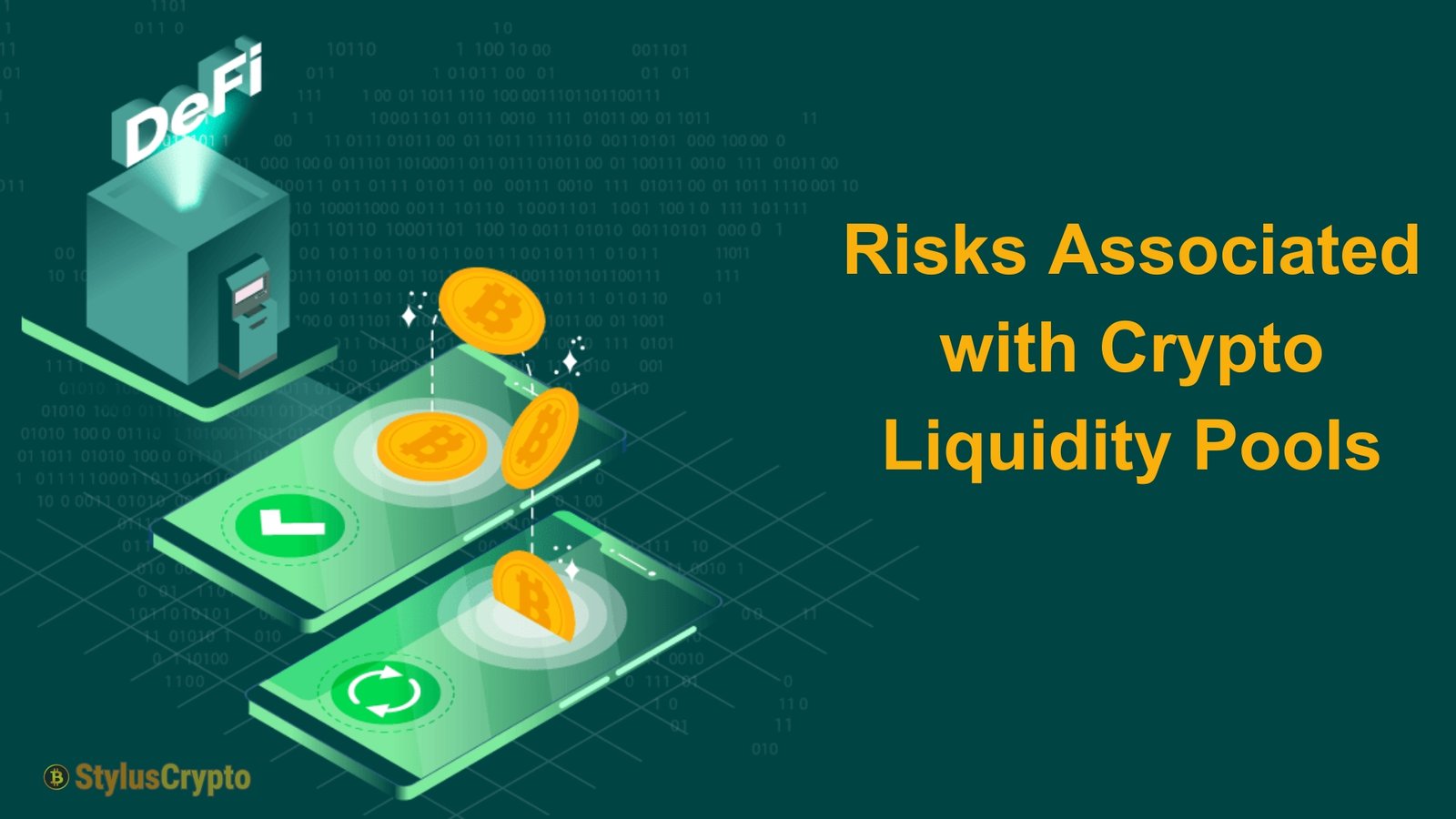Since their inception, crypto liquidity pools have become a cornerstone of decentralized finance (DeFi). Offering solutions to the liquidity problems of decentralized exchanges (DEXs), they allow for seamless token swaps without relying on traditional order books. This innovation has revolutionized crypto trading, yield farming, and many other facets of the decentralized ecosystem. In 2024, the landscape of crypto liquidity pools has evolved significantly, introducing new features, benefits, and risks. Here’s a comprehensive guide to understanding how they work, their current trends, and the future.
What are Liquidity Pools?
A liquidity pool is a smart contract on the blockchain containing pairs of tokens. These pools are designed to enable decentralized trading by allowing users to trade assets without requiring a centralized intermediary. Liquidity providers (LPs) contribute to these pools by depositing pairs of tokens, such as Ethereum (ETH) and USDC, into the pool. In return, they receive LP tokens representing their share in the pool.
Liquidity pools are used extensively in automated market makers (AMMs) like Uniswap, PancakeSwap, and Curve. These platforms allow users to trade assets directly from the pool, relying on algorithms to determine the price of tokens based on the ratio of assets in the pool.
How Liquidity Pools Work
Users who want to swap tokens interact with the liquidity pool rather than matching with a buyer or seller. For instance, when trading ETH for USDC, the user deposits ETH into the pool and withdraws USDC. The smart contract behind the liquidity pool automatically adjusts the price of the tokens based on supply and demand, ensuring trades occur smoothly.
One of the key elements of liquidity pools is the constant product formula used by platforms like Uniswap. This formula ensures that the product of the reserves of the two assets in the pool remains constant. When a large trade occurs, this formula causes the price to adjust significantly, introducing a concept known as slippage. Larger trades in small pools may cause prices to deviate from the market price, impacting traders’ returns.
Earning Yield with Liquidity Pools
In 2024, yield farming remains one of the most popular ways to earn passive income through DeFi. Liquidity providers earn some trading fees when users trade tokens in the pool. For example, if a pool charges a 0.3% trading fee, it is distributed proportionally to all LPs based on their pool share.
Many DeFi platforms also incentivize liquidity provision by offering native tokens as rewards. For example, Uniswap rewards users with UNI tokens, while PancakeSwap rewards CAKE tokens. These tokens can be staked or sold, further boosting the potential yield.
However, LPs are exposed to a phenomenon known as impermanent loss. This occurs when the price of the tokens in the pool fluctuates significantly. The value of the assets in the pool can diverge from the value had they simply held the tokens outside the pool. While trading fees and incentives can offset impermanent loss, it remains a crucial risk that LPs must consider.
Key Trends in 2024
Cross-Chain Liquidity Pools
Cross-chain liquidity pools have emerged as a significant trend with the rise of multi-chain ecosystems. In 2024, projects like ThorChain and Synapse led the charge in creating liquidity pools across different blockchain networks. This innovation allows users to trade assets between chains seamlessly, increasing liquidity and promoting interoperability in the DeFi space.
As more blockchains adopt Layer 2 solutions and rollups, the need for cross-chain liquidity is becoming even more pressing. These solutions enable faster, cheaper transactions while maintaining security, making it easier for traders to move between Ethereum, Binance Smart Chain (BSC), Avalanche, and other popular networks.
Stablecoin-Focused Liquidity Pools
Stablecoins have seen a tremendous rise in demand, particularly for trading, borrowing, and lending. In response, many platforms have launched liquidity pools focusing solely on stablecoins. These pools minimize volatility risk, as stablecoins like USDC, DAI, and USDT are pegged to the U.S. dollar or other fiat currencies.
Curve Finance remains the dominant player in stablecoin liquidity pools, offering users lower slippage and reduced impermanent loss due to the relatively stable prices of assets in the pool. In 2024, Curve expanded its offerings to include more diverse assets like algorithmic stablecoins and fiat-pegged assets, catering to a broader audience seeking low-risk yield farming opportunities.
Automated Yield Optimization
As the complexity of liquidity provision grows, many users turn to automated yield optimization platforms like Yearn Finance and Harvest. These platforms pool users’ funds and allocate them to the most profitable liquidity pools across multiple protocols.
In 2024, the rise of AI and machine learning in DeFi will further enhance these platforms’ ability to predict market movements and optimize returns. Users can now deposit their tokens into these platforms and let algorithms handle the rest, making yield farming accessible even to those with little technical knowledge.
Governance Tokens and Decentralized Control
Governance tokens will remain an integral part of liquidity pools in 2024. These tokens give holders a say in how a protocol is run, allowing the community to vote on fee structures, reward distribution, and future upgrades. Uniswap’s UNI and SushiSwap’s SUSHI are prime examples of governance tokens that grant users control over the platform’s future.
As decentralized governance becomes more refined, liquidity providers play a crucial role in shaping the protocols in which they participate. This has fostered greater community involvement and the development of new features tailored to users’ needs.
Risks Associated with Crypto Liquidity Pools
While liquidity pools offer numerous benefits, they also come with risks that users should be aware of:
- Impermanent Loss: As mentioned earlier, impermanent loss occurs when the value of tokens in the pool diverges due to price fluctuations. The loss is “impermanent” because the prices may revert, but if a user withdraws before they do, the loss becomes permanent.
- Smart Contract Risk: Liquidity pools rely on smart contracts, and any bugs or vulnerabilities in the code can lead to loss of funds. While most DeFi platforms undergo audits, the risk remains, especially for newer or less established projects.
- Liquidity Mining Dilution: As more users provide liquidity to a pool, the rewards are distributed among many LPs. This can dilute individual returns, especially on popular platforms with high competition.
- Market Volatility: While liquidity pools allow for trading, they can also be susceptible to extreme market volatility. Significant price swings in the underlying assets can affect the value of LP tokens and trading volume, impacting overall returns.
The Future of Liquidity Pools
In 2024, the future of liquidity pools looks bright as DeFi continues to grow and innovate. Cross-chain interoperability, AI-driven optimization, and decentralized governance will continue to push the boundaries of what’s possible. Additionally, as traditional finance (TradFi) institutions increasingly explore DeFi, we may see a hybrid model where institutional liquidity is added to decentralized platforms.
One potential area of growth is regulated liquidity pools. As governments worldwide introduce clearer regulations for cryptocurrencies and DeFi, regulated pools could emerge, allowing institutional investors to participate while maintaining compliance with laws and regulations.
Conclusion
Crypto liquidity pools have come a long way since their inception, offering a decentralized, efficient, and profitable way to trade and earn yield. As we move into 2024, the innovation surrounding liquidity pools continues to evolve, promising more opportunities and challenges for participants. Whether you’re a trader, liquidity provider, or DeFi enthusiast, staying updated on this space’s latest trends and developments will be crucial to navigating the ever-changing crypto landscape.

